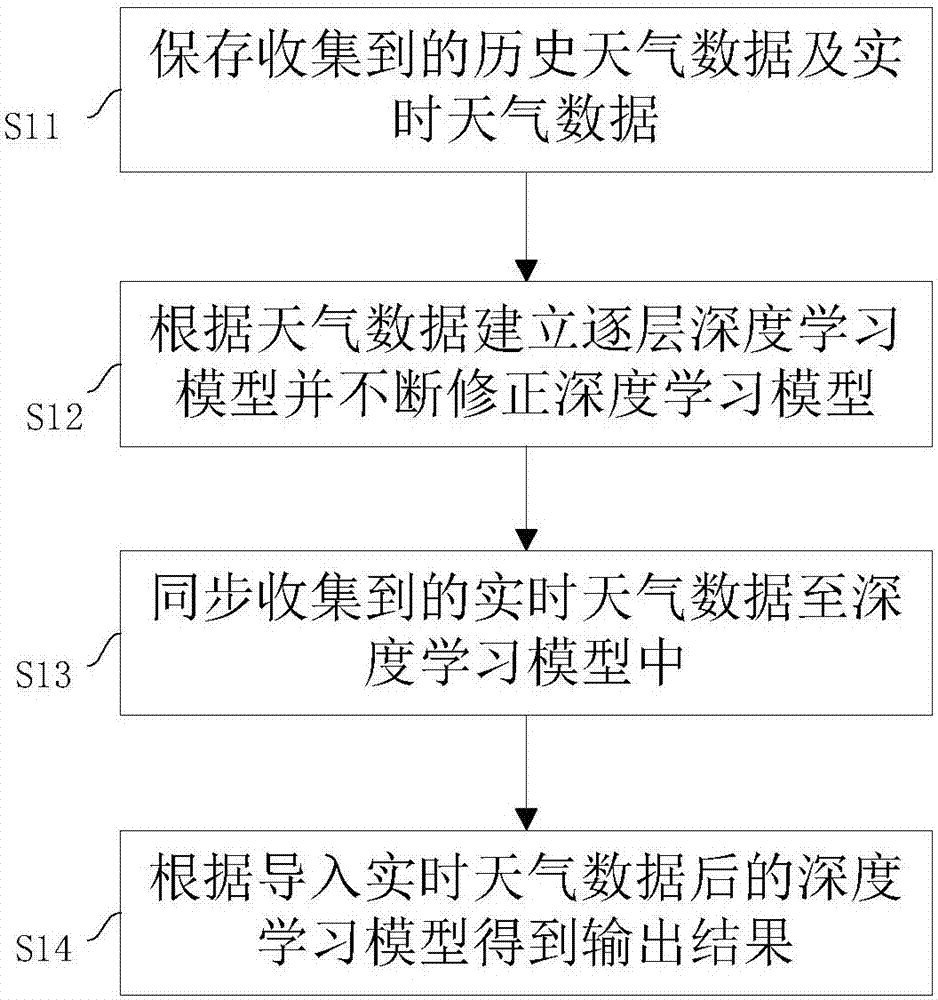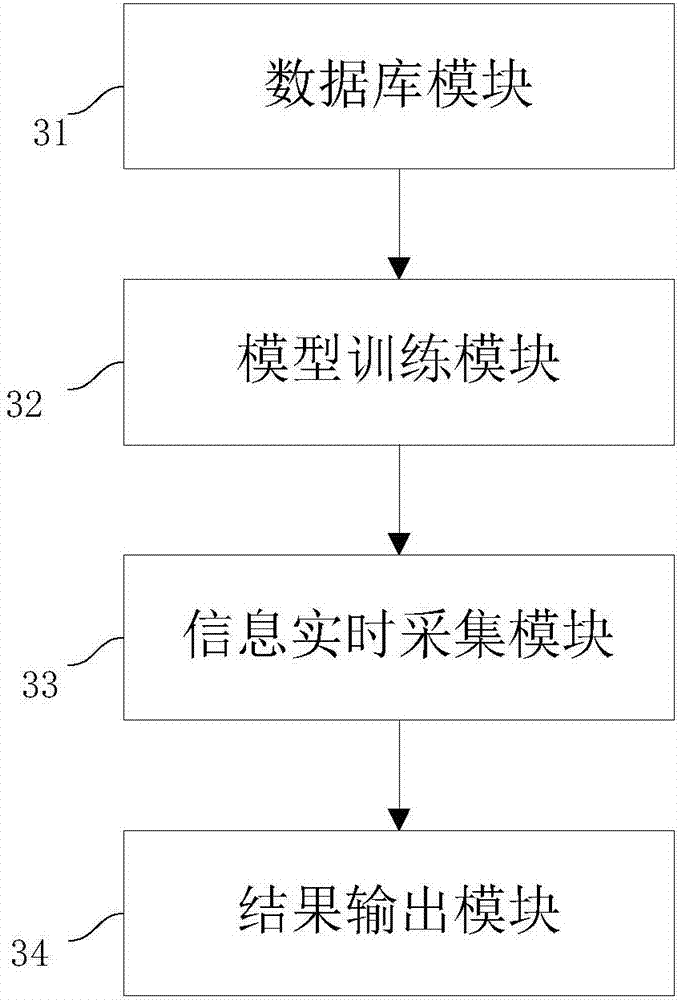Deep-learning-based weather forecasting method and system
A technology of deep learning and weather prediction, applied in neural learning methods, forecasting, knowledge expression, etc.
- Summary
- Abstract
- Description
- Claims
- Application Information
AI Technical Summary
Problems solved by technology
Method used
Image
Examples
Embodiment 1
[0044] This embodiment provides a weather prediction method based on deep learning, such as figure 1 shown, including steps:
[0045] S11: save the collected historical weather data and real-time weather data;
[0046] S12: Establish a layer-by-layer deep learning model according to the weather data and continuously correct the deep learning model;
[0047] S13: synchronizing the collected real-time weather data into the deep learning model;
[0048] S14: Obtain an output result according to the deep learning model after importing the real-time weather data.
[0049] Prior knowledge about meteorology is a very important part of weather forecasting, and it is the core of previous expert systems, which is related to the quality of the forecasting effect. And this kind of knowledge is mostly empirical knowledge, which is obtained through continuous learning and exploration by meteorologists. Finding laws and methods in massive data is one aspect that deep learning is good at,...
Embodiment 2
[0100] This embodiment provides a weather prediction method based on deep learning, such as figure 2 shown, including steps:
[0101] S21: save the collected historical weather data and real-time weather data;
[0102] S22: Constructing a deep learning model using a denoising autoencoder;
[0103] S23: Using support vector machine classification to adjust and correct the deep learning model;
[0104] S24: Synchronize the collected real-time weather data into the deep learning model;
[0105] S25: Obtain an output result according to the deep learning model after importing the real-time weather data.
[0106] The difference from the first embodiment is that in the first embodiment, step S12 specifically includes step S22 and step S23.
[0107] Pattern training is divided into two processes, which are bottom-up unsupervised learning and top-down supervised learning methods.
[0108] like Figure 4 As shown, since the present invention uses unprocessed original data for an...
PUM
 Login to View More
Login to View More Abstract
Description
Claims
Application Information
 Login to View More
Login to View More - R&D Engineer
- R&D Manager
- IP Professional
- Industry Leading Data Capabilities
- Powerful AI technology
- Patent DNA Extraction
Browse by: Latest US Patents, China's latest patents, Technical Efficacy Thesaurus, Application Domain, Technology Topic, Popular Technical Reports.
© 2024 PatSnap. All rights reserved.Legal|Privacy policy|Modern Slavery Act Transparency Statement|Sitemap|About US| Contact US: help@patsnap.com










